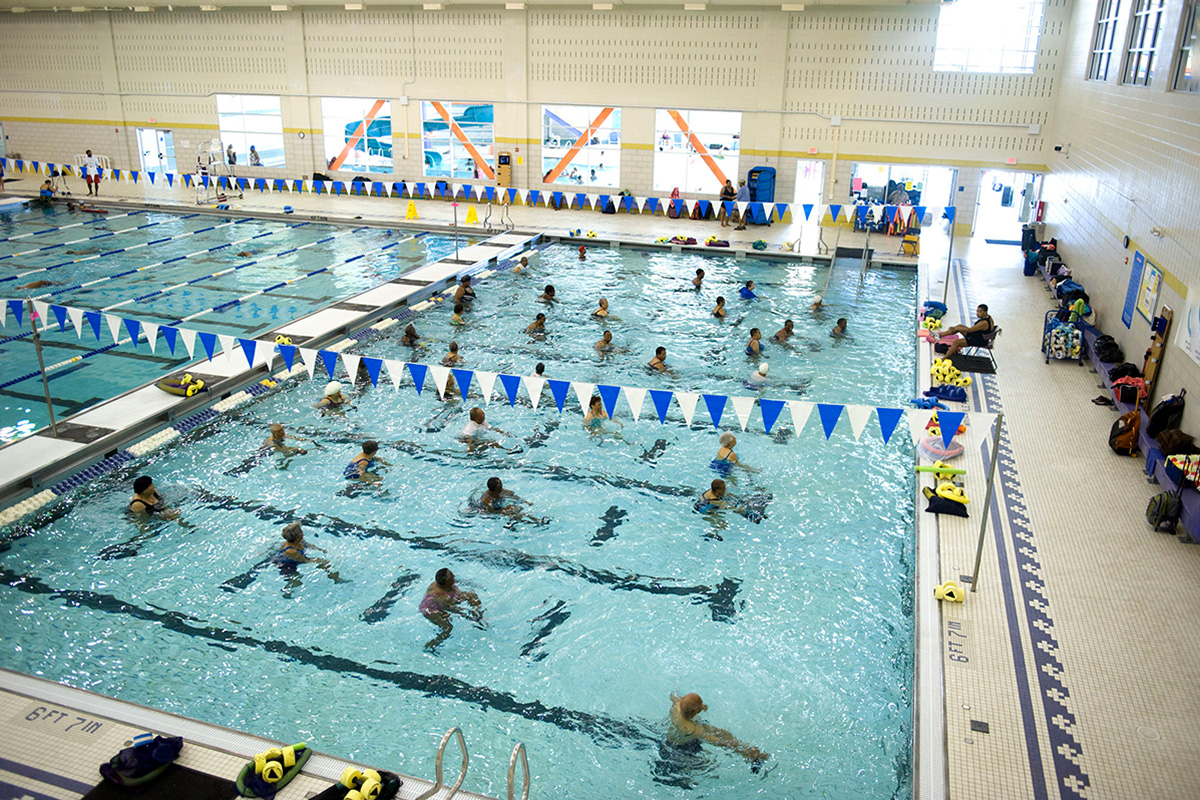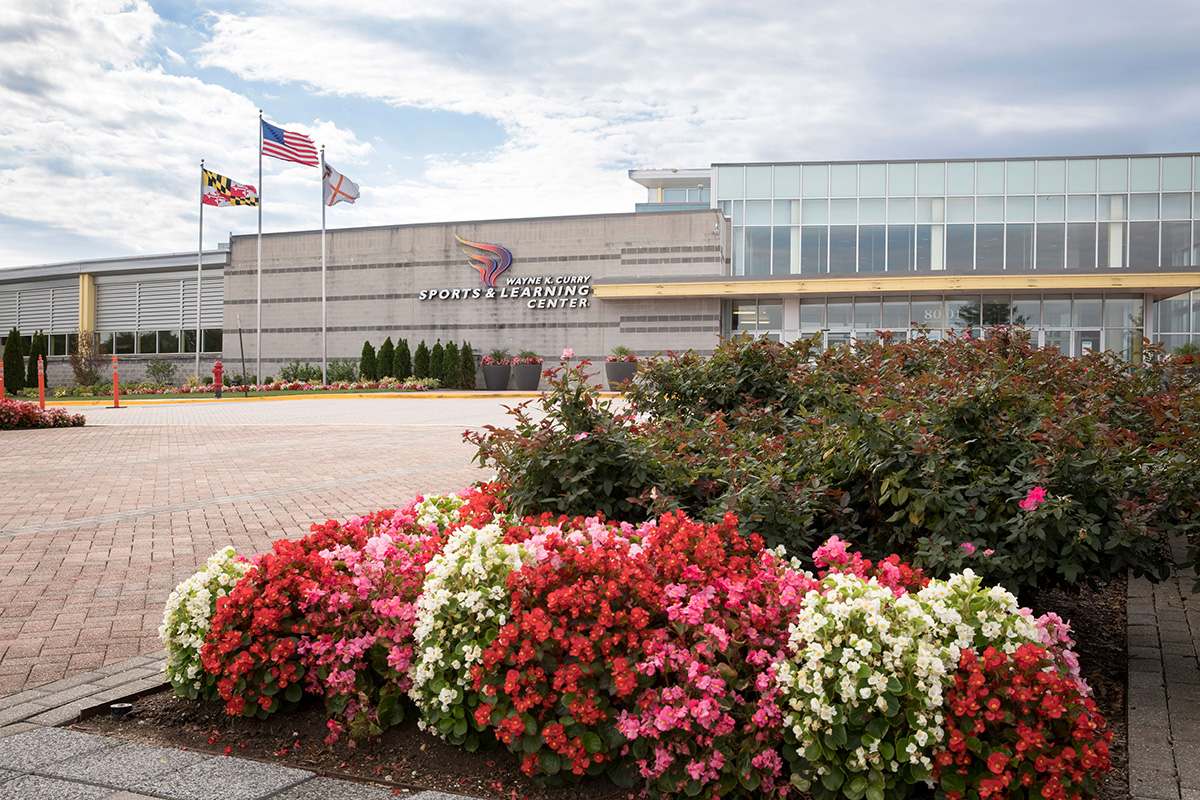Sports Learning Complex, A New Approach
Sports Learning Complexes are revolutionizing how we approach sports and education. Imagine a facility that seamlessly blends athletic training with academic learning, fostering a holistic development for young athletes and community members alike. This innovative approach creates a vibrant hub where physical prowess meets intellectual growth, offering a unique learning experience unlike any other.
These complexes aren’t just about building better athletes; they’re about building better communities. By integrating educational programs, community outreach initiatives, and cutting-edge technology, sports learning complexes aim to create inclusive environments that empower individuals and strengthen social bonds. From youth development programs to adult recreational leagues, these spaces offer something for everyone, fostering a sense of belonging and shared purpose.
Defining a Sports Learning Complex
A sports learning complex is more than just a collection of sports facilities; it’s a dynamic hub integrating sports training, education, and community engagement. These complexes offer a holistic approach to athletic development, fostering physical literacy, academic achievement, and social growth.
Key Features and Characteristics
Typical sports learning complexes feature a range of indoor and outdoor facilities, including athletic fields, courts (basketball, tennis, volleyball), fitness centers, classrooms, and administrative offices. They often incorporate technologically advanced training equipment and data analysis tools to optimize athletic performance. Accessibility and inclusivity are key design considerations, ensuring the complex caters to individuals of all abilities and backgrounds.
Examples of Sports Learning Complexes
Examples vary widely. Smaller complexes might focus on a single sport, like a dedicated baseball training center with batting cages and pitching mounds. Larger complexes, however, could encompass multiple sports, offering facilities for everything from swimming and track and field to weightlifting and martial arts. Some may even include specialized facilities like climbing walls or dance studios. The Olympic Training Centers around the world represent large-scale examples, while smaller community centers provide localized versions of the same concept.
Benefits for a Community
Sports learning complexes offer numerous benefits. They promote healthy lifestyles by providing accessible recreational opportunities. They contribute to community cohesion by creating a shared space for interaction and collaboration. Economically, they can stimulate local businesses and create job opportunities. Finally, they enhance the overall quality of life within a community by fostering a culture of physical activity, learning, and social interaction.
Educational Aspects of a Sports Learning Complex
A well-designed sports learning complex integrates academic learning with athletic training, providing a unique educational experience.
Educational Programs Offered
These complexes can offer a wide range of programs. These could include academic tutoring programs, sports-specific training camps, workshops on sports science and nutrition, leadership development programs, and even career counseling focused on sports-related fields.
Integrating Sports and Academics
Integration can be achieved through various methods. For example, a curriculum could incorporate case studies of successful athletes, analyzing their training regimens and strategies. Students might also participate in research projects investigating the biomechanics of movement or the effects of nutrition on athletic performance. The complex could host guest speakers from various sports-related professions, exposing students to diverse career paths.
Sample Youth Sports Development Program Curriculum
A sample curriculum for a youth program might include modules on fundamental skills development, sports psychology (focus on goal setting and resilience), injury prevention and recovery, and sportsmanship and teamwork. The program could also integrate elements of STEM education, exploring the physics of motion or the use of data analytics in sports. Practical sessions would be balanced with classroom-based learning.
Community Engagement and Outreach
Maximizing community involvement is crucial for the success of a sports learning complex.
Strategies for Attracting Diverse Community Members
Strategies include offering affordable or subsidized programs, promoting the complex through community events and local media, partnering with community organizations that serve diverse populations, and ensuring accessible facilities and programming. Multilingual signage and culturally sensitive programming are also essential.
Building Partnerships
Partnerships with local schools, organizations (e.g., youth leagues, recreation departments), and businesses can provide access to resources, funding, and expertise. These partnerships can also expand the reach of the complex and create a stronger sense of community ownership.
Hosting Community Events
The complex can host a variety of events, including open houses, family fun days, tournaments, workshops, and health fairs. These events can attract diverse community members, generate revenue, and promote the complex’s services.
Financial Sustainability and Management
Securing funding and managing resources effectively is essential for long-term sustainability.
Planning a trip to Universal Studios’ Halloween Horror Nights? Check out the amazing food and drink options available this year – you can find a full menu on this page: halloween horror nights 2023 food and drinks. However, remember to be mindful of what you consume afterwards, especially if you have a sensitive bladder. For example, knowing which foods and drinks that irritate the bladder can help you avoid any unpleasant surprises after a night of frights and delicious treats.
Enjoy the scares, but stay comfortable!
Funding Models
Funding models can include public grants, private donations, sponsorships, membership fees, program fees, and facility rentals. A diversified funding strategy is crucial to mitigate financial risks.
Revenue Generation
Revenue can be generated through program fees, facility rentals, sponsorships, merchandise sales, and fundraising events. Developing a comprehensive marketing and sales plan is key to maximizing revenue streams.
Budget Proposal
A detailed budget proposal would include projected expenses (staff salaries, utilities, maintenance, equipment) and income streams (program fees, facility rentals, sponsorships). This proposal should also Artikel a contingency plan to address potential shortfalls. A realistic financial model is essential for securing funding and ensuring long-term viability.
Design and Infrastructure Considerations
Careful planning of the location, layout, and infrastructure is crucial for a successful complex.
Ideal Location and Layout
The ideal location should be easily accessible by public transportation and have ample parking. The layout should be user-friendly, with clear signage and easy navigation between facilities. Consideration should be given to environmental factors, such as natural light and ventilation.
Necessary Infrastructure Components
Essential infrastructure includes well-maintained athletic fields, courts, a fitness center, classrooms, administrative offices, locker rooms, and ample parking. Accessibility features for people with disabilities are paramount.
Essential Equipment and Technology
Equipment needs vary depending on the sports offered, but generally include sports-specific equipment (balls, bats, nets), fitness equipment (weights, cardio machines), and technology (computers, software for data analysis, video recording equipment).
The Role of Technology in a Sports Learning Complex
Technology plays a significant role in enhancing the learning experience.
Enhancing the Learning Experience
Technology can be used to provide personalized training programs, track athlete progress, analyze performance, and deliver educational content. Interactive simulations and virtual reality can enhance learning and engagement.
Technological Tools
Examples include wearable sensors to track biometrics, video analysis software to review performance, and online learning platforms to deliver educational content. Data analytics platforms can track individual and team performance over time.
Data Analytics and Athlete Progress, Sports learning complex
Data analytics allows coaches and trainers to track athlete progress, identify areas for improvement, and tailor training programs to individual needs. This data-driven approach can optimize performance and prevent injuries.
Case Studies of Successful Sports Learning Complexes

Examining successful complexes provides valuable insights.
Successful Examples
Examples include the Olympic Training Centers in various countries, which offer world-class facilities and training programs. Many universities also have successful sports complexes that integrate training and education. Specific examples would require more detailed research and would vary by region.
Comparing Approaches
Successful complexes often share a commitment to holistic development, community engagement, and technological integration. However, their specific approaches to programming, funding, and management may differ depending on their size, scope, and community context.
Lessons Learned
Key lessons learned include the importance of strong community partnerships, robust funding strategies, and a commitment to ongoing evaluation and improvement. Adaptability and responsiveness to the evolving needs of the community are crucial.
Addressing Challenges and Potential Obstacles
Proactive planning helps mitigate potential issues.
Potential Challenges
Challenges include securing adequate funding, obtaining necessary permits and approvals, managing community expectations, and ensuring the long-term sustainability of the complex. Community resistance or lack of awareness can also pose obstacles.
Overcoming Challenges
Strategies include developing a strong business plan, engaging with the community through transparent communication, building strong partnerships, and securing diverse funding sources. Proactive risk management is essential.
Risk Management Strategies
Risk management involves identifying potential risks (financial, operational, safety), assessing their likelihood and impact, and developing mitigation strategies. Regular maintenance, insurance, and emergency preparedness plans are crucial.
Planning a trip to Universal Studios’ Halloween Horror Nights? Check out this awesome guide to the Halloween Horror Nights 2023 food and drinks before you go – you don’t want to miss out on the themed treats! After all that sugary goodness, however, remember to be mindful of what you consume; you might want to consult a list of foods and drinks that irritate the bladder to avoid any unexpected nighttime bathroom breaks during the event.
Having a fun, spooky, and comfortable experience is key!
The Future of Sports Learning Complexes
Innovation will continue to shape these complexes.
Emerging Trends and Innovations
Emerging trends include increased use of technology (virtual reality, AI-powered coaching), greater emphasis on personalized learning, and a focus on sustainability and environmental responsibility. The integration of esports is also becoming more prevalent.
Role of Technology

Technology will play an increasingly important role in optimizing training, enhancing the learning experience, and improving data analysis. AI-powered coaching tools and virtual reality simulations are likely to become more commonplace.
Vision Statement
A future-forward sports learning complex would be a technologically advanced, sustainable, and inclusive hub that fosters holistic development, community engagement, and lifelong learning through sport. It would serve as a model for innovative sports education and community building.
The future of sports learning complexes is bright, promising a dynamic blend of athletic excellence and academic enrichment. By embracing innovation, fostering community partnerships, and prioritizing sustainability, these complexes are poised to become integral parts of their communities, shaping the next generation of athletes, scholars, and leaders. The model offers a compelling vision for holistic development, proving that the synergy between sports and education can create a powerful force for positive change.
Share this content:
